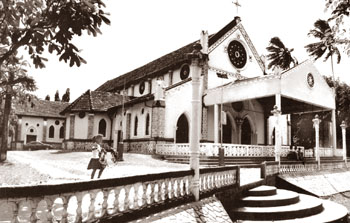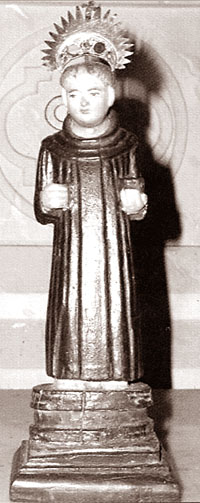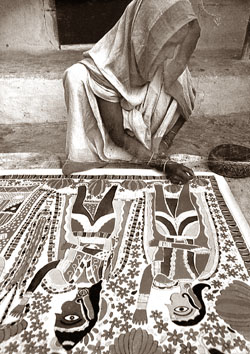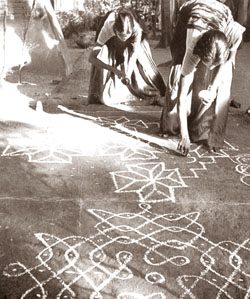
Knowledge, a sacred duty obligatory on every Muslim
KNOWLEDGE: Matara St. Mary’s Convent marked the sixth annual
Islamic Day with Moratuwa Additional District Judge S. D. Arfa Thassim.
Here are excerpts of her speech which touched on the education of women
in Islam. Rev. Sister Sandamalie Kurera, Principal of the school was
also present.
“First of all I must thank the organising committee for inviting me
to grace this occasion especially in this convent as I’ve a special
regard to this convent. This is a very special school of the Southern
Province, most of the Muslim girls of the area up to Hambantota are
educated in this convent.
The reason for that is though this is a school with Christianity
background management of the convent always welcome Muslim students and
there is no discrimination. Also I should say they are enjoying the
privilege of adhering to Muslim culture. For example they are allowed to
wear their uniform to convent according to Islamic way.
That itself is unique. I would like to say this privilege is not
granted by most of the other schools that I am aware of. I take this
opportunity to thank the principal and the management of the convent for
the privilege granted. I must say even my daughter Nithashi had her
primary education in this convent, reluctantly I removed her as I had to
shift to Colombo due to my profession.
Today I thought to speak a few words to the Muslim girls about
education for women in Islam.
Our Prophet has said 1,400 years ago in the darkest of times “The
seeking of knowledge is incumbent upon every Muslim male and female.‚ÄĚ
This clearly states that there is no disparity between men and women in
seeking of knowledge. One can quite rightly say with this statement,
that it is the right of every woman to equip herself with a sound
education.
Other Hadiths too show the importance of gaining knowledge. Not only
that it should begin from young age.
The Prophet has said: “One should seek knowledge from the cradle to
the grave.‚ÄĚ
The Prophet has also stated: “That a person even could go to China in
order to broaden his education.‚ÄĚ China was then known to be the
furtherest end.‚ÄĚ
Dear children you may now understand to seek knowledge is a sacred
duty, it is obligatory on every Muslim, male and female.
What is the first word revealed to Prophet by Allah Almighty through
his Angels? The first word revealed of the Qur‚Äôan was ‚ÄėIqra‚Äô. It is in
Sura-Al-Alaq. It says: “Read! In the name of thy Lord who created. Seek
knowledge! Educate yourselves! Be educated.‚ÄĚ
In Islam men and women have the equal right to seek education.
Education and seeking knowledge are mandatory upon men and women in
Islam.
What is the meaning of mandatory? It is an order. Allah has ordered
all human beings without any gender discrimination to seek knowledge and
education.
Quran believes in equality of all human kind. But it announces the
superiority of the class of educated people.
Let us look at what Allah Almighty said in His Noble Quran:
Chapter 39:9 - “Are the educated and uneducated equal? Are those
equal who know and those who do not know?
Chapter 35:28 - “Those truly fear God among his servants are who have
knowledge: for God is exalted in might, Oft Forgiving.‚ÄĚ
Further Prophet Muhammed said:
“If anyone travels on a road in search of knowledge, Allah will cause
him to travel on one of the roads of paradise, The angels will lower
their wings in great pleasure with one who seeks knowledge, The
inhabitants of the heavens and the earth,And the fish in the deep waters
will ask forgiveness for the learned man.
The superiority over the learned man is like that of the moon on the
night, when it is full, over the rest of the stars.
The learned are the heirs of the Prophets, And the Prophets leave
neither dinar nor dirham (currency of that country) leaving only
knowledge, and he who takes it, takes an abundant portion.
(This Hadith is from Kithab-Al Ilm-Book of knowledge - translation of
Sunan Abu Dawud - Book 25 - No. 3634).
And in that Book, No. 3656 the Prophet said: “If anyone acquires
knowledge only to get some worldly advantage, he will not experience the
odour of paradise.‚ÄĚ
So education and knowledge is necessary to understand the essence of
teachings of the Quran too. In the above noble verses and sayings, we
clearly see that knowledge and education are a must on both Muslim men
and women. ‚ÄúThose who know are better than who do not know‚ÄĚ
Hence education to both men and women in Islam is essential. And
those who seek good knowledge and education will be granted paradise and
the Angels will lower their wings with great pleasure, and forgiveness
will be asked for them. The learned are considered the heirs of
prophets.
With these instructions of Prophet it became a religious duty of
Muslims to educate themselves, their families and their societies. No
Muslim could prevent a another human being from acquiring knowledge.
Gender or race, culture or tradition could not become the cause for
prohibiting a person from educating one’s self. Acquiring knowledge is a
religious law, therefore it is necessary to achieve.
And apart from religious law it should be noted if a woman is
educated that is for the well being of ones family. Today you are a
daughter, a sister and tomorrow you are a wife, mother, mother-in-law,
then a grandmother. A girl is the mother of the nation. So if a girl is
educated, whole nation is educated. We have to understand the reality of
this.
I would like to draw your attention back to 1400 years. Fatima
daughter of Prophet was well educated, beautiful and highly respected.
Her sacrifices to protect and support human rights were among the most
praiseworthy acts. It is said whenever Fatima entered the room Prophet
would stand and give his seat to her. Khadijah who later became a wife
of Prophet owned her own business.
I’ll not take much of your time. I hope dear students, you would have
understood the importance of education, how mandatory it is and seeking
knowledge is a religious law imposed on every human being by God.
Finally I’ll quote a part of a poem from Hazrat Ali’s book entitled
‚ÄėNehjul Balaja‚Äô. He has beautifully portrayed the significance of
knowledge in that book.
“The beautiful dress does not reflect beauty, The beauty is, the
beauty of knowledge and morals.‚ÄĚ
Well, I am grateful for your time. Thank you for listening.
I’ll conclude my speech with a prayer verse from Quran which revealed
to Prophet.
‚ÄėRabbi Zidnee Ilma‚Äô
‚ÄėO Lord increase us in knowledge.‚Äô
Ameen.‚ÄĚ
#####################
Historical Wahakotte church
Richard Basnayake
|

St. Anthony's Church Wahakotte
|
FEAST:The annual feast of historic Wahakotte Church will be
held on June 17th with a festive high mass celebrated by Rt. Rev. Dr.
Vianney Fernando, Bishop of Kandy.
The Routes to Wahakotte
St. Anthony’s church at Wahakotte is one of the most sacred shrines
for catholics in Sri Lanka. This historic church is situated in Udugoda
Palelsiya Pattuwa, to the North-West of Matale district, four miles from
Galewela town on Matale-Galewela main rod.
It is about 140 Km from Colombo, through Warakapola-Kurunegala,
Galewela and Wahakotte. From Kandy it is about 55 km via
Matale-Palapathwela and Wahakotte, and from Negambo it is about 130 km.
through Kurunegala-Galewela and Wahakotte. From Chilaw it is about 120
km along Kurunegala-Galewela and Wahakotte.
History
Wahakotte was known as ‚ÄúWasala-Kotte‚ÄĚ - Castle in the Fort. It is
believed that there was a palace and a fort, where the present church is
situated, the village was so called, because it protected the palace,
traces of which are still visible. There is another legend to say that ‚ÄúWaha‚ÄĚ-poison;
‚ÄúKotte‚ÄĚ - pillow; means poisonous pollow because a queen had committed
suicide after hearing of her husband’s death at war.
History records that when king Dutugemunu defeated king Elara, in 164
B.C. he had built a small fortress at Wahakotte. There are still some
ruins of ancient buildings on a rocky-hill called ‚ÄúMaligatenna‚ÄĚ -
Palace-field.
These ruins show that Wahakotte was once a prosperous town with a
fort, ramparts, a moat and thorough fares, where sub-kings lived. One
can see Dambulla Rock Temple to the north from Maligatenna. The Ceylon
Alamanac - (1834-Page 204) records that there were ruins of “Rangalle
Nuwara‚ÄĚ and a Hindu Kovil - ‚ÄúPattini Devalaya‚ÄĚ in the woods close by.
The history records that the first christian Monarch - Yamasinghe,
adopted son of Karalliyadda Bandara, who later became Don Phillip after
embracing christianity in Goa, India, was received by some rebels from
Kandy (Queyroz-pages-443447708) and was crowned at Wahakotte by the
Portuguese.
It is also recorded that Don Francisco Wijekoon, who organised the
Kandyan rebels against king Rajasinghe, too, was present on this
occasion (Pieris P.E. Colombo 1914-page 249).
King Rajasinghe of Kandy, who fought against the Portuguese captured
some of them and made them settle down in Wahakotte. These captured
people earned their living by engaging themselves in cultivation,
business and trade, and women sewing dresses for women, men sewing
dresses for men; some engage themselves in running taverns and making
liquor. (Robert knox-page 248).
The people of Wahakotte are slightly fairer in complexion, compared
to other rural people in the area, though there are also very dark
people among them. Because of this complexion neighbouring villagers
still refer to them as ‚ÄúPruthugeesi‚ÄĚ or the decendants of ‚ÄúParangi‚ÄĚ.
Some had Kandyan names mixed with Portuguese hames, like Don Juan
Wijeratne or Dona Issabella Ekanayake.
When the Dutch captured the areas that were under the Portuguese
rule, they confiscated all catholic institutions, churches, schools and
religious places, chased away the Catholic priests and banned all
religious activities.
Visit of Rev. Fr. Joseph Vaz
When Rev. Fr. Joseph Vaz, who arrived in Sri Lanka from South India,
disguised as a labourer, had visited Wahakotte, the peasants there had
built a little hut on a small hill for Fr. Joseph Vaz, which is still
venerated by Catholics.
In 1705, Rev. Fr. Jacob Gonsalves arrived in Sri Lanka, he studied
Sinhala Language and Literature under the tutelage of Buddhist monks in
Kandy and composed hynms and wrote prayer books and other religious
literature in Sinhala on ‚ÄúPuskola Path‚ÄĚ - Ola leaves.
The Catholics have safeguarded all these ola leaves with utmost
respect and devotion. Later Fr. Jacob Gonsalves was fondly called
‚ÄúSinhala Swami‚ÄĚ - Sinhala Father - as he was the first to translate all
religious literature into Sinhala.
Harmony with the King
When Keerthi Sri Rajasinghe, younger brother of Sri
Vijayarajasinghe’s Queen, became the king of Kandy, he allowed the
catholics to perform their religious activities and gave freedom of
worship, the king of Kandy as a token of goodwill gave back the statue
of St. Anthony, which was plundered from a Church in Kandy, during the
reign of his brother-in-law Sri Vijaya Rajasinghe, to the catholics of
Wahakotte.
St. Anthony of Padua (Italy)
|

The six inch tall miraculous wooden statue of saint Anthony of Padua.
Pictures by Rev.
Fr. Hilarion Fernando.
|
Wahakotte is a well-known pilgrim centre, enshrining a miraculous
statue of St. Anthony of Padua (Italy). St. Anthony is a catholic saint
born in 1195 in Lisbon - Portugal. He entered the Augustinian order at
the age of 15 and lived as a a priest and a famous preacher and wonder -
worker. There are thousands of recorded miracles attributed to St.
Anthony during his lifetime and also after his death.
He died in Padua on June 13 1231 and Catholics celebrate his ‚Äúfeast‚ÄĚ
on this day.
In times of tribulation the people of Wahakotte sought St. Anthony’s
help during persecution, they assembled in secret around the statue to
pray, they made a Novena - nine days of prayer - and carried the statue
in procession in times of drought and plagues. At the turn of the
Century there was a severe drought in ‚ÄúKandapaha Korale‚ÄĚ - Wahakotte -
with all water tanks dry.
Having had recourse to their religious practices the people requested
the catholics of Wahakotte to invoke blessings from their god for three
days the catholic community payed to St. Anthony and at the conclusion
of their prayer the drought ended with a torrential rain. (heliamas. L.
Ceylon 1932 - page 30). the Catholics and non-catholics had organised a
‚ÄúPerahera‚ÄĚ procession, to mark this miracle. Even today some
neighbouring buddhists speak of this miraculous power of St. Anthony.
This grateful neighbours, it is said, had brought gifts to St-Anthony
in a solemn manner, accompanied by Kandyan ‚ÄúHewisi‚ÄĚ band, and accorded
by popular acclamation the right to use ‚ÄúHewisi‚ÄĚ at Catholic feast at
Wahakotte.
‚ÄúHewisi‚ÄĚ is not used in many other churches as it was the privilege
of Kings, Adigars and Disawas. Still Buddhists come to Wahakotte, church
- festival from ‚ÄúKandapahala Korale‚ÄĚ with their ‚ÄúHewisi‚ÄĚ and make this
feast, a symbol of unity among Buddhists and Catholics.
Legend
There is also an interesting legend about this sacred statue of St.
Anthony. Once, some enemies destroyed this great church and plundered
all the valuable things in the church but this statue.
The villagers had somehow hidden this statue made of wood, only six
inches in height, in a rice-pot and was able to save it from enemies. As
the Catholics of Wahakotte faced much harassment from the Dutch and the
Kandyan rulers, during this time, they erected a place of worship in a
secret place, during the time of Fr. Joseph Vaz, and during the day time
if looked like a cattle-shed, but at night it was a prayer-room.
When Wahakotte celebrations are held now, the statue of St. Anthony
is taken in a procession to this sacred place and in holy prayer the
catholics pay homage to Rev. Fr. Joseph Vaz. The historic Wahakotte
religious festival, portrays the story of Catholics, who, without any
help from organised clergy maintained the catholic faith for over 200
years in a purely, non-catholic surroundings. today Wahakotte or
Wasala-Kotte, Which once flourished as a-Royal City - holds a unique
place in the history of Catholics in Sri Lanka.
The Parish Priest of Wahakotte church, Rev. Fr. Hilarion Fernando,
O.S.B. said that, Buddhists, Hindus, and Muslims in this area help
catholics, and specially the Buddhist monks from temples around
Wahakotte always help to make this religious festival a success.
He further requests, all pilgrims, to refrain from wearing expensive
jewellery and not to bring unnecessary expensive items with them, as the
church authorities intend to celebrate this holy feast in a simple and
devout manner, and to get blessings and pray for peace to our Sri Lanka!
###################
Hindu festivals of India
Rohan L. Jayetilleke
 |
|

Festival rituals
|
HINDU FESTIVALS: The Indian Hindu year has six seasons, with
two months forming a season. The seasons are Vasant (March - May),
Summer (May - July), Monsoon rains (July - September) Sarath (September
- November) Hemant (November - January) and Sisir (January - March).
In each of these seasons there are festivals called Utsava and
Mahotsava. The Utsava is dedicated to a village or regional
superintending god of the particular Hindu shrine and Mahotsava are
great festivals that involve the entire Hindu community of the country.
India is a land of myriad Hindu religious festivals. These festivals
abound with legends of victory over evil and heroism of gods and
goddesses. Prior to independence, when the literacy rate was very low,
the unsophisticated villagers, mostly the illiterate, literacy not being
a wherewithal for successful agriculture and animal husbandry for
sustenance, nor was it necessary for them to learn Sanskrit to memorise
the stanzas of the Rig Veda, Yajur Veda, Sama Veda and Atharva Veda to
plead with the gods and goddesses for boons for a healthy and successful
agriculture and other activities, as the brahamin was the intermediary
between them and god and they offered hymns and prayers on their behalf.
Thus the simple folk computed their age as per the sequence of the
annual festivals. These were the essential punctuation marks in their
story of life.
Vasant (Spring) beckons the trees to bloom, and the birds to sing.
Scattered among the ripping ears of wheat are the bright yellow mustard
flowers, mustard too is grown among the wheat and other cereals, as its
pungent smell repel insects and worms.
Tender blossoms embellish the mango trees after their deep slumber
inviting the birds to sing and dance among the bunches of flowers. Bees
hum around having taken their fill of honey. On the day of Vasant
festival everybody where a special shade of yellow and celebrate Vasant
festival.
This festival is dedicated to goddess Sarasvati, the goddess of
learning and the fine arts. Then comes the festival of Holi, the very
end of the cool season. It has a heritage of colour and democratic and
egalitarian. All divides and inhibitions are temporarily laid to rest
and men and women of all ages colourfully dressed armed with bamboo
syringes, shoots one another with coloured water normally light red.
There are pitchers of water coloured kept beside the road for them to
replenish their syringes as they dance and move to and fro in the
streets or roads. The festival is linked to King Hiranyakasypa, who
claimed himself superior to gods.
However, his son Prahlad though a small child disclaimed the father's
claim. Prahlad prayer which is sung at this festival is,‚ÄĚI want neither
a kingdom nor a heavenly happiness nor escape from rebirth. All I want
is the end of sufferings of the people‚ÄĚ. The father sensing, the son was
a potential danger to him, devised to kill him.
All his plans failed. Then his daughter Holika, in order to show the
father, her brother Prahlad would be burnt alive kept him on her lap and
set a fire around. She was destroyed by fire, but the child Prahlad rose
up with, God in his lips.
Hence on the eve of Holi bonfires are lit and Holi is the festival of
dance, music and song, victory over the wicked king, the triumph of good
over evil. With the passage of time this festival has become associated
with the Lila of Radha, giving inspiration to poets and lyrists to
compose sensuous poems and songs.
The monsoon period of two months in India has evoked the largest
number of songs among the Saivite Hindus of North India as the hot
season has frown away with monsoons.
As the months roll on anxiously people look skyward. It is time for
renewal of dormant life. Swings are brought out from the lofts of houses
and hung on branches of trees and boys and girls swing singing melodious
songs. This swing tradition comes from the Hindu shrine tradition of
keeping idols, (effigies) of gods and swining them.
To be continued
#####################
Feasts
* The feast of St.Anthony of Padua is celebrated today, June 13 in
Colombo, Kochchikade,Dalupotha,Batagama and several other parishes in
the country.
* Batagama Catholics will mark the 118th feast of their Patron Saint
today with a festive High Mass sung by Rev.Fr.Patrick Perera, Rector St
Aloysius Minor Seminary, Borella. Following the evening Holy Mass at
6.00 pm, a procession will parade in the vicinity of the Church with the
statue of St.Anthony.
* On Sunday, June 17, Wahakotte and Soysapura, Moratuwa will
celebrate the feast of this great Saint.
* On June 24 Sunday Thoduwawa Catholic community will mark the 75th
Jubilee of their Church dedicated to St.Anthony. Churches covering
several parts of the country will offer festive Masses to honour St
Anthony.
* Mattumagala Church dedicated to Sacred Heart of Jesus will
celebrate the feast on June 17. The festive High Mass will be sung at
8.00 am by Very Rev.Fr.Marcus Ferdinandez, Vicar General, Colombo
Region. Following the evening Mass at 5.00 pm, there will a procession
and at the end of the procession the parishioners will be dedicated to
the Sacred Heart of Jesus. |

